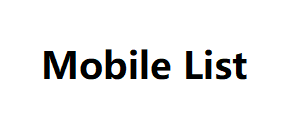While email represents the epitome of modern technology, its written format harks back to traditional letter writing. In a sense, email revitalized the art of written communication, albeit in a digital form.
Legacy of Email Signatures: The email signature, once a simple sign-off, has become a digital business card, incorporating contact details, social media links, and even marketing messages. This trend underscores the fusion of personal and professional identities in the digital realm.
Digital Etiquette and Email Hygiene
Email has proven its utility in times of crisis and emergencies. During natural disasters, political upheavals, or health emergencies like Mongolia B2B List the COVID-19 pandemic, email serves as a vital channel for disseminating accurate information, safety guidelines, and updates. Organizations, governments, and healthcare institutions leverage email to reach a broad audience rapidly and efficiently, fostering a sense of community and shared responsibility.
The evolution of email has given rise to the concept of digital etiquette, commonly known as “netiquette.” This set of informal guidelines governs how individuals should interact in the digital realm, including email communication. Practicing good netiquette involves respecting others’ time, refraining from excessive use of capitalization (seen as shouting), and using clear subject lines to enhance the relevance of emails.
Revival of Letter Writing:
Additionally, email hygiene emphasizes the importance of maintaining a clean and organized inbox. Strategies like email filtering, archiving, and unsubscribing from irrelevant newsletters contribute to a clutter-free email environment that supports efficient communication.
Cultural Nuances: Email has highlighted. Cultural Mobile List differences in communication norms. What might be considered polite or direct varies across cultures, leading to cross-cultural misunderstandings that call for cultural sensitivity in digital correspondence.



